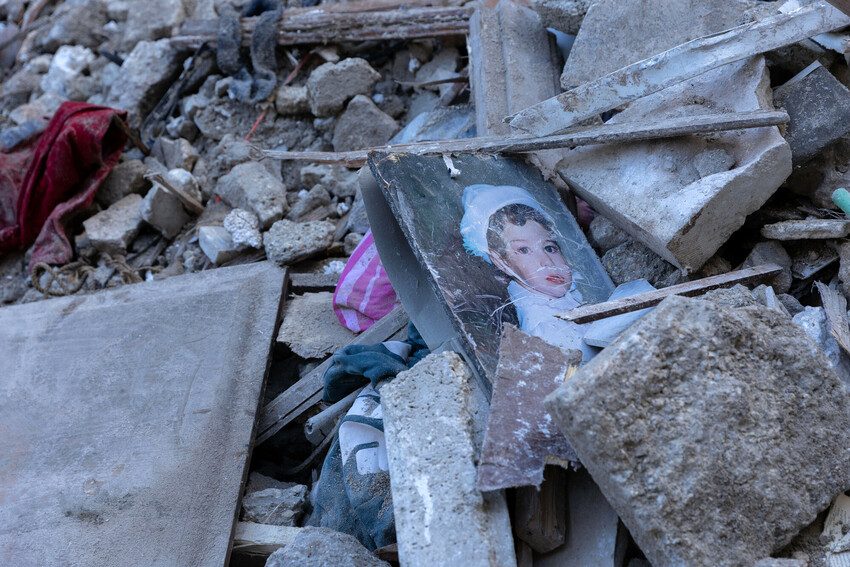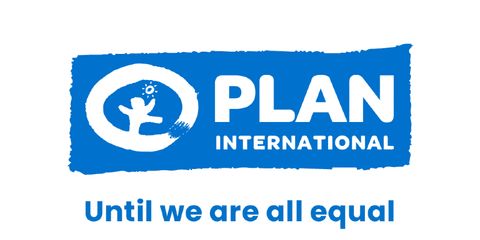10 ways to respond after an earthquake
20 February 2023Addressing these 10 steps early in earthquake response and recovery can minimise harm to vulnerable groups, including girls and young people, blogs Dr Unni Krishnan, Global Humanitarian Director.

The earthquakes and aftershocks that hit Türkiye and Syria have resulted in over 46,000 deaths. Life will never be the same for survivors.
I have worked on the frontlines often during the initial hours following monster earthquakes, in India, Nepal, Japan, China, Turkey, Haiti amongst other places. While standing shoulder to shoulder with local relief workers in crisis settings, I have picked up tips from local communities, government officials and often children.
Here are my learnings on how to respond after an earthquake:
1. Listen to local knowledge
Local volunteers are always the first responders, sometimes the only responders. They are the true heroes in every earthquake. The role of local communities, especially children and youth in saving lives during the first few hours and days in an earthquake zone are critical.
Local people are often quicker to know which bridges have collapsed and which roads are blocked after natural disasters than satellites and navigation systems.
2. Children need priority attention
Children are often the most vulnerable in earthquake settings. Children who have lost their parents, who are separated from family and friends and displaced from their homes, girls and LGBTIQ+ children are more vulnerable to bullying, abuse and exploitation.
Relief efforts must place children, and those who are most vulnerable, like displaced girls, first.
3. Don’t ignore aftershocks
They can bring down buildings that have been compromised and can cause many more deaths.
4. ‘Invisible’ needs must be addressed
Search and rescue efforts must be the top priority along with life-saving medical assistance, food, clean water and sanitation, blankets to beat freezing weather conditions in the initial hours and days. However, some requirements are less visible – like mental health needs. Left unattended, psychological issues can leave lasting scars on young minds. It is critical to address the mental health needs of young survivors from day one.
In addition, earthquakes can cause fractures of the spine, hips, bones, and legs. Left unattended, they result in permanent disabilities. Offering physiotherapy services at the community level can change the life stories of earthquake survivors.
5. Correct information saves lives
The correct information at the appropriate time aids relief efforts. While working in Sendai in Japan (following the monster undersea earthquake and Tsunami in 2011), I witnessed a group of students running an information kiosk. Their bulletin board provided information such as where to get heaters and blankets. A lifeline to many.
6. Quick decisions and good leadership can make or break recovery efforts
Every moment is a litmus test on leadership in crisis settings. Every moment is also a new beginning to change the course of relief efforts. Speed is a characteristic of quality in crisis response. Governments must listen to survivors when designing relief and recovery plans.
7. Treat people with dignity
An earthquake zone is not the address to send old clothes and medicines past their expiry date. A principled humanitarian approach is about responding to the actual unmet needs of survivors, not about supplying what you have in surplus.
Cash and voucher assistance has emerged as a preferred and more effective mode of relief assistance in most aid settings. Sometimes survivors have simple needs- such as getting replacement eyeglasses when they have been destroyed.
If you find a mismatch between your efforts and abilities and the actual needs of people, consider allowing others who can be more relevant to do the job.
8. Earthquake preparedness is vital to saving lives
A dollar invested in disaster risk reduction and preparedness is priceless when disaster strikes. Governments and donors need to dig deeper into their pockets and invest to build resilient communities. Bad buildings kill people. It is vital to make schools and hospitals in risk areas stronger and safer.
Disadvantaged communities are hit worst by crisis and poverty multiplies suffering. Long term investments that target the root causes of poverty are key to building resilient communities.
9. Aid workers are human beings first and relief workers second
They are often a group that gets the least attention amid impossible deadlines and competing priorities. Providing care and support, safe access and transportation, and ensuring the well-being of caregivers are vital.
10. Recovery will be a marathon, not a sprint
Recovery will take time. Thousands of lives have been lost and thousands more are changed irrevocably.
Plan International is joining with our partners at MECC in Syria and will be on hand to address and respond to the unmet needs of children, girls, young women and their families as the true scale of this disaster is revealed.

